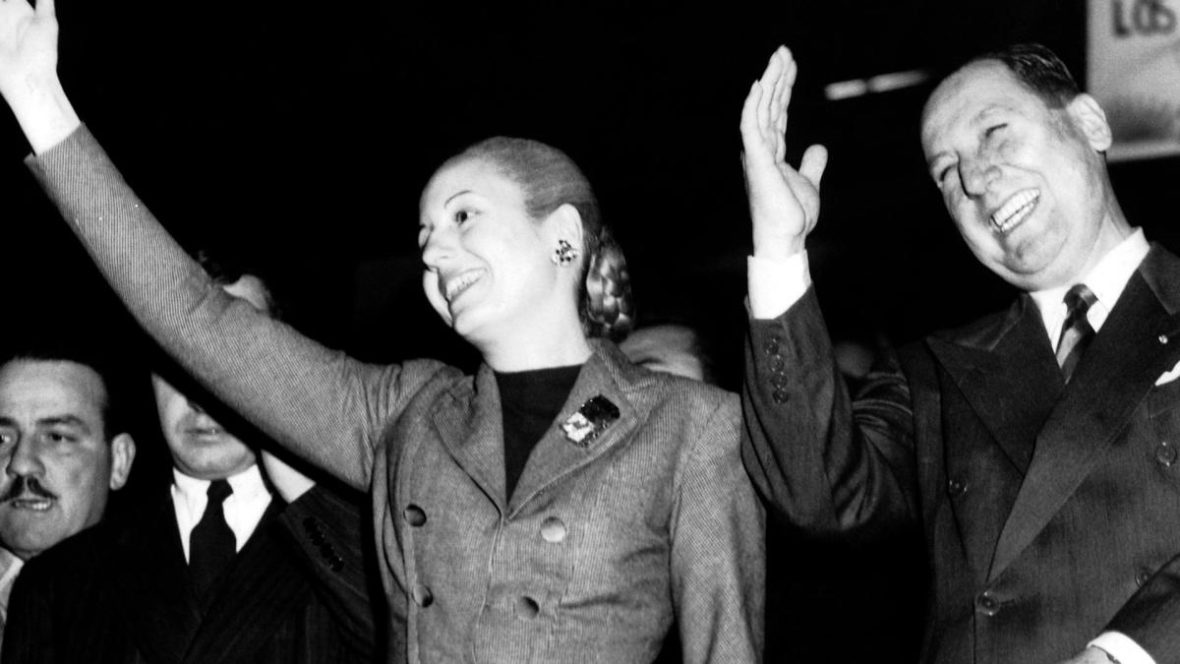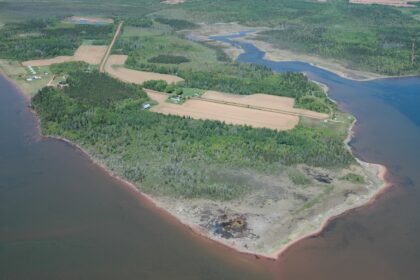Eva Maria Duarte de Peron was the wife of Argentine President Juan Peron and First Lady of Argentina from 1946 until her death in 1952. She is usually referred to as Eva Peron or Evita. Take a look below for 30 more fun and interesting facts about Eva Peron.
1. She was born in poverty in the rural village of Los Toldos, in the Pampas, as the youngest of five children.
2. At 15 in 1934, she moved to the nation’s capital of Buenos Aires to pursue a career as a stage, radio and film actress.
3. She met Colonel Juan Peron in Buenos Aires on January 22, 1944, during a charity event at the Luna Park Stadium to benefit the victims of an earthquake in San Juan, Argentina.
4. Eva and Juan married in 1945.
5. Juan Peron was elected President of Argentina in 1946. During the next 6 years, Eva became powerful within the pro-Peronist trade unions, primarily for speaking on behalf of labor rights.
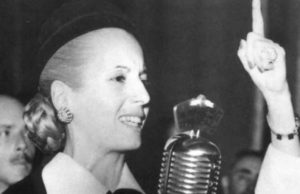
6. She ran the Ministries of Labor and Health, founded and ran the charitable Eva Peron Foundation, championed women’s suffrage in Argentina, and founded and ran the nation’s first large-scale female political party, the Female Peronist Party.
7. In 1951, Eva announced her candidacy for the Peronist nomination for the office of Vice President of Argentina, receiving great support from the Peronist political base, low-income and working-class Argentines who were referred to as the “shirtless ones.”
8. Opposition from the nation’s military and the bourgeoisie, coupled with her declining health, forced her to withdraw her candidacy.
9. In 1952, shortly before her death from cancer at 33 years of age, Eva was given the title of “Spiritual Leader of the Nation” by the Argentine Congress.
10. She was given a state funeral upon her death, a prerogative generally reserved for heads of state.
11. She became a part of international popular culture, most famously as the subject of the musical “Evita.”
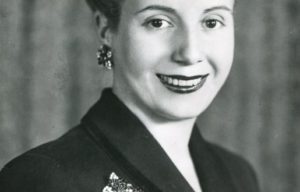
12. Even today, Eva has never left the collective consciousness of Argentines.
13. Cristina Fernandez de Kirchner, the first elected female President of Argentina, and many other leaders attest that women of her generation owe a debt to Eva for, “her example of passion and combativeness.”
14. When she was barely a year old, her father returned to live back with his legal wife.
15. Initially, Eva, her mother, and her siblings, lived in a one-room apartment in Jurin.
16. In October 1933, young Eva acted in her school play “Students Arise.” After playing the small role, she contemplated pursuing a career in acting and dreamt of becoming a great and successful actress.
17. In Buenos Aires, Eva’s debut performance on stage was in the play “The Perezes Misses” at the Comedias Theater on March 28, 1935.
18. In 1936, she went on a national tour with a theater company.
19. She worked as a model and got offered acts in a few B-grade movies.
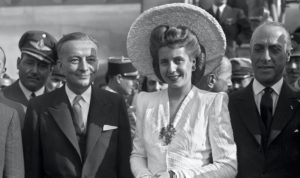
20. The turning point in her acting career came when she was offered a daily role in a radio drama called “Muy Bien,” which broadcast on World Radio.
21. At one point, Eva was the co-owner of a radio company.
22. By 1943, she became one of the highest paid radio actresses in Argentina.
23. In 1943, she began her career in politics as one of the founders of the Argentine Radio Syndicate.
24. In 1944, she was selected as the President of the broadcast performers’ union. As president of the union, she started a daily program called “Toward a Better Future,” which was a soap opera based on the accomplishments of Juan Peron, a Colonel and her husband.
25. She was the first Argentine to undergo chemotherapy, which was a novel treatment at the time.
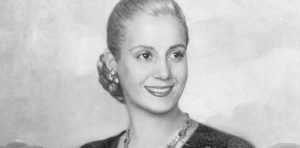
26. Immediately after Eva’s death, the government suspended all official activities for two days and ordered all flags flown at half-staff for ten days.
27. The morning after her death, while Eva’s body was being moved to the Ministry of Labour Building, eight people were crushed to death in the throngs.
28. In the following 24 hours after her death, over 2,000 people were treated in city hospitals for injuries sustained in the rush to be near Eva as her body was being transported, and thousands more would be treated on the spot.
29. For the following two weeks after her death, lines would stretch for many city blocks with mourners waiting hours to see Eva’s body lie at the Ministry of Labour.
30. In 1971, Eva’s body was exhumed and flown to Spain, where Juan Peron maintained the corpse in his home. Juan and his third wife, Isabel, decided to keep the corpse in their dining room on a platform near the table.

